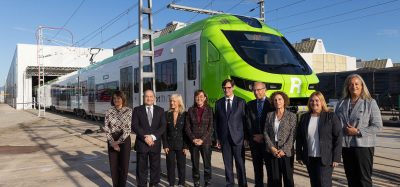Safety at level crossings: Evaluate, engage and enforce
Posted: 6 July 2020 | Isabelle Fonverne | No comments yet
Isabelle Fonverne, Senior Advisor for Safety at the International Union of Railways (UIC), writes that, to better address risks at level crossings, soft or harder measures must be taken not only by the railways, but also by the road sector and relevant authorities.
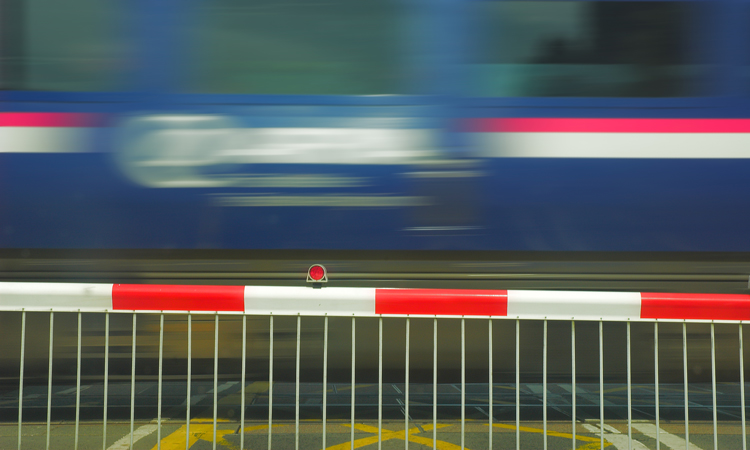

Causes of collisions and near misses
There are over half a million level crossings in the world, with approximately 108,000 in the European Union (EU) – 53 per cent of those are protected level crossings1.
It is widely recognised that human behaviour is the main factor for road collisions, with the vast majority of collisions at level crossings caused by drivers not observing the highway code, either deliberately or unintentionally.
United States of America
The Federal Railway Administration (FRA) studied the effectiveness of photo enforcement to detect and enforce level crossing violations in Orlando, Florida, from August to December 2018. Police were deployed at selected crossings and issued 2,958 violation notices during that period.
The objective was to not only enforce people, but also make them aware of the risks that they may have taken at level crossings. A survey was conducted during the same period and offenders were asked several questions to understand why they had driven through the crossing during activation. During the survey, 333 answers were received, out of which:
- 139 (42 per cent) responded: “I did not see the activated crossing signals (e.g. flashing lights and the gates lowering)”
- 70 (21 per cent) responded: “l felt I had enough time to get through”.
Level crossings in the U.S. are most used by motorists rather than by vulnerable users, like in Europe.
Belgium
Infrabel, the Belgian infrastructure manager, also conducted a survey on the origins and reasons of level crossing misuse (see Figure 1 – information dated early-2019). Most of the collisions involved people living in the vicinity of the level crossings, or in the same city or neighbouring city, and most of the offenders were over 70 years old.
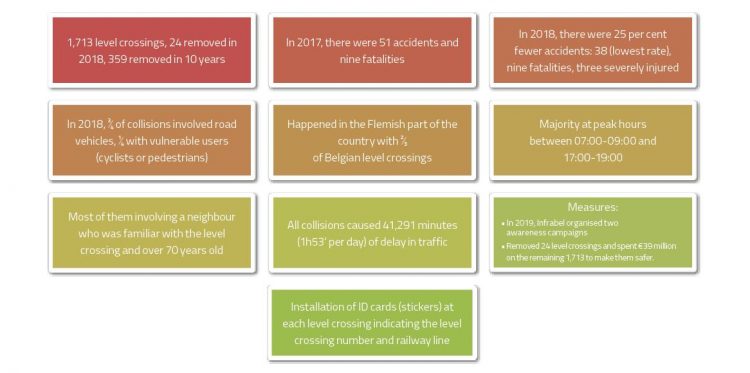

Figure 1 – Information gathered about level crossing misuse in Belgium (early-2019).
To better address risks at level crossings, soft or harder measures must be taken not only by the railways, but also by the road sector and relevant authorities.
To find the best solutions, there is the need to:
- Better evaluate the risks at each level crossing and better engage stakeholders from different sectors, local authorities, communities and users’ associations
- Take engineering measures and find innovative solutions
- Take enforcement measures: Work with the police and legal authorities
- Take educational and awareness measures: Collaboration of rail and road sectors with ministries of education and transport.
Better evaluation, better engagement
After a collision with a school bus at a level crossing in France on 14 December 2017 – which caused six fatalities and many severe injuries – several stakeholders, including the UIC, were interviewed by a Parliamentary Mission. The outcomes were published in a report issued in April 2019 by the French Ministry of Transport, which made 12 recommendations, which included a better interaction between road, rail and road safety authorities to better evaluate possible risks at each level crossing and a better engagement of all stakeholders from different sectors to find solutions to improve safety at level crossings.
Engineering measures, innovative solutions
It is widely observed that most collisions with vehicles or vulnerable users are caused because of inadequate level crossing users’ decisions, either intently or deliberately.
From a railway and a road point of view, one should find solutions to prevent level crossing users from making wrong decisions or help them to make the right decisions at the right moment. This can be made by implementing hard and/or soft measures. There are several concepts being studied, developed or which have already been applied that may help vehicle drivers or pedestrians to cross safely.
Belgium
Starting in October 2019, Infrabel placed ID cards at all public level crossings and, by the end of March 2020, all other level crossings should be equipped. The objective is to help level crossing users to easily identify the right level crossing thanks to its ID number (see Figure 2), which facilitates the intervention of Infrabel, first responders or the police in case of incidents or accidents.
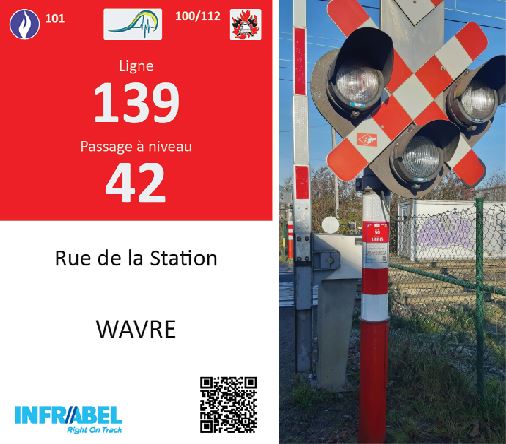

Figure 2 – An ID number sticker on a level crossing warning light post.
In November 2019, Infrabel equipped its 20 most problematic level crossings with pre-warning signs to prevent potential ‘blocking back’ situations (see Figure 3). They are now carrying out a study on the efficiency of those measures towards road users.
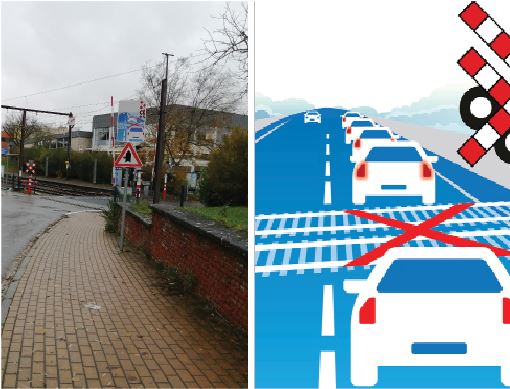

Figure 3 – Warning signs for motorists at level crossings to prevent potential ‘blocking back’ situations.
SAFER-LC: EU project coordinated by the UIC
The SAFER-LC project provided the rail industry and researchers worldwide with an analysis and identification of the most cost-effective prevention and mitigation safety measures, and the results are organised into a practical toolbox. The SAFER-LC toolbox is a free online tool which lists cost-effective measures, implementation tips, examples, empirical evidence for effectiveness and other useful details for road and rail infrastructure managers and decision-makers. The toolbox is based on empirical evidence collected from scientific literature and from the railway industry, as well as on data produced during several pilot tests, which were implemented during the project.
The project has received funding from the European Union’s Horizon 2020 research and innovation programme under grant agreement No 723205.
The SAFER-LC toolbox is a good example of exploitable results from EU-funded projects: it is a Decision Support Tool which is being developed during the project – it will be easy to consult by end-users, will be available online free-of-charge once finalised and will continue to be maintained, updated and improved by the UIC to improve safety at European level crossings for the benefit of the road and rail community and society.
UIC coordinated project: DIGIM II
In recognition of the importance of level crossing safety, and in continuation of the DIGIM I Connected Level Crossing project, the DIGIM II project was launched in 2019, with eight participating members: SNCF, SBB, Network Rail, RAI, Via Rail Canada, Ferrovie dello Stato Italiane, CARS and Infraestruturas de Portugal, in partnership with Dassault Systèmes.
The aim of the project is to improve safety and efficiency at level crossings by designing a new advanced driver assistance system. Under this project, level crossings will be connected to cars to inform them about the level crossing’s status. If no action or insufficient action is taken by the driver in a closed level crossing situation, the car will take control of the system, automatically slowing down the car and stopping it safely before the barrier (see Figure 4).


Figure 4: The aim of the DIGIM II project is to improve safety and efficiency at level crossings by designing a new advanced driver assistance system.
The project will run in two phases. In the first phase, in partnership with Dassault Systèmes, the system will be designed and simulated using ‘3DXperience’ modelisation software. The consequences of connecting cars to level crossings will then be modelled using the same tool. The system will be implemented and tested in a real environment during the second project phase.
Smombie
The term smartphone zombie – or ‘Smombie’ – has been used in recent popular culture to describe pedestrians who walk slowly and without attention to their surroundings because they are too focused on their smartphones. Safety hazards have been noted due to such distracted pedestrians. Cities, including Chongqing in China and Antwerp in Belgium, have introduced special pedestrian lanes for smartphone users to help direct and manage them. ‘Smombies’ also use level crossings and, therefore, innovative solutions are being sought.
The ‘AMY’ mobile app for safety
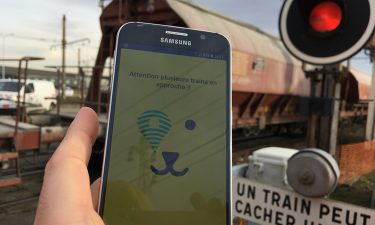

Figure 5: The ‘AMY’ mobile app for safety, tested at a level crossing on the SNCF network.
‘AMY’ is a digital and innovative solution using ultrasound technology in order to protect ‘Smombie’ pedestrians staring at their smartphone and, subsequently, being at risk of an accident while walking on the street or using a level crossing.
In 2018, RATP tested this system at a level crossing on the SNCF network in France (see Figure 5). Thanks to an electronic case connected to a signalling box and a loudspeaker installed at the level crossing, a specific ultrasound is emitted when a train is approaching. Thanks to ‘AMY’, this ultrasound signal is picked up by the smartphone, which immediately warns the pedestrian with an audible and visual alert (see Figure 6). ‘AMY’ could be an effective alternative to the costly removal of railway crossings.
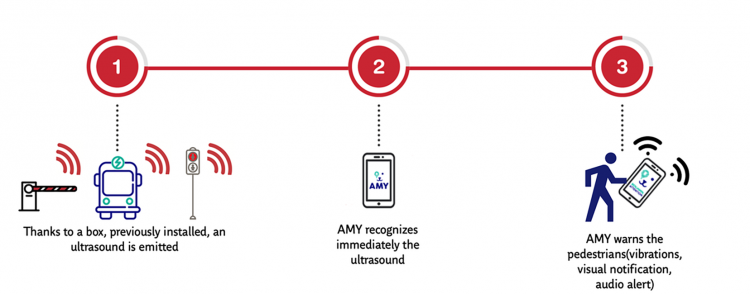

Figure 6: The ‘AMY’ mobile app for safety, tested at a level crossing on the SNCF network. Credit: Benjamin Charles, Intrapreneur at RATP Group/[email protected].
In 2016, the Dutch city of Bodegraven installed lights at road pedestrian crossings to specifically help guide ‘Smombies’ who are looking at the ground instead of looking straight ahead. The lights are green when they may cross, and red when they must stop. The light system is also working in other countries, including Israel and South Korea.
Perhaps this solution could be used at level crossings to reduce the number of accidents?
When hard measures are not enough to prevent collisions
Enforcement measures
Speed, or red-light enforcement cameras, are now being installed at level crossings in more and more countries; there are approximately 80 in France and 65 in the UK.
Enforcement shall be accompanied by education measures
Many railway companies and road safety organisations organise level crossing safety awareness campaigns at a national level. Some of them also join the unique International Level Crossing Awareness Day campaign (ILCAD) each year.
Nowadays, people are increasingly under stress, particularly in urban areas, absorbed by their daily duties: such as work, appointments and school. They may also be distracted by electronic devices.
Some rail infrastructure companies are installing more and more CCTV cameras at level crossings to observe people’s behaviour; the footage may also serve for investigation, enforcement or public safety awareness purposes.
Example: Belgium, 15 March 2018 – near miss with pedestrian
CCTV footage was used on the Belgian national television network to warn people of the dangers at level crossings, as well as the delays and costs that it may generate. All collisions at level crossings in Belgium caused a total of 41,291 minutes (1h53’ per day) of delay in the traffic.
Example: Netherlands, fatal collisions when ‘zigzagging’
In 2019, nine people were killed and three were severely injured when zigzagging between barriers. ProRail posted a video online to highlight the dangers of zigzagging and another video to alert cyclists of the dangers when they cross tracks.
International Level Crossing Awareness Day (ILCAD)
ILCAD, led by the International Union of Railways (UIC), brings together railway industry representatives, road authorities, academics and more from around the world, and aims to raise awareness about the dangers associated with level crossings. ILCAD is a joint commitment that began in 2009 with ELCAD (EU countries + Israel). Since then, UIC has been coordinating this worldwide event to raise public awareness about the dangers at level crossings.
At the last ILCAD event in 2019, the UIC and ILCAD released a video of Polish CCTV footage showing incidents at rail level crossings, including situations with emergency responders.
ILCAD 2020 Campaign and launch conference
Due to the COVID-19 worldwide outbreak, Network Rail and UIC have jointly decided to postpone the 2020 ILCAD launch conference that ought to take place on 11 June 2020 in York, UK. It is now expected to take place in York, but in 2021, with further information to be published on the ILCAD website in due course.
Reference:
- According to ERA
Isabelle Fonverne joined the International Union of Railways (UIC) in 1992 and has worked in an international environment for activities including environment, high-speed, economics, technology and research and safety. From early 2010, Isabelle started working on level crossing safety, taking over the Secretariat of the European Level Crossing Forum (ELCF) and two UIC Safety Groups: SSMG (Systems Safety Management Group: ERA/CER/UIC) and IRSN (International Railway Safety Network). Isabelle is a Member of the UNECE Working Party 1 on Road Safety, this is how the UIC initiated active discussions with the UNECE to create a group of experts on level crossing safety hosted by UNECE in Geneva. Isabelle has been the UIC Coordinator of ILCAD (the International Level Crossing Awareness Day) which has been growing year after year.
Global Railway Review Autumn/ Winter Issue 2025
Welcome to 2025’s Autumn/ Winter issue of Global Railway Review!
The dynamism of our sector has never been more apparent, driven by technological leaps, evolving societal demands, and an urgent global imperative for sustainable solutions.
>>> Read the issue in full now! <<<
Issue
Related topics
Related organisations
Canadian Association of Railway Suppliers (CARS), Dassault Systèmes, European Union (EU), Federal Railroad Administration (FRA), French Ministry of Transport, Infrabel, Infraestruturas de Portugal (IP), International Union of Railways (UIC), Network Rail, ProRail, RAI, SNCF, Swiss Federal Railways (SBB), VIA Rail Canada



